Worst Cat Foods – 8 Brands You Should Absolutely Avoid
Quick Guide
Bad cat food versus good cat food – Can you recognize the difference?
Before we dive into the eight worst cat food brands, let’s recognize a few important facts about what’s good and what’s bad in cat food.
There are a couple of common misconceptions about food for cats. One is that all commercial food is bad and that it’s always better to make food for your cat at home. On the contrary, poorly balanced homemade food can lead to nutrient deficiencies and serious health complications. Never prepare food for your cat without following a reliable recipe that delivers complete and balanced nutrition.
A second misconception is that “Big Pet Food” is the bogeyman and that small, independent brands consistently deliver superior products. While large pet food companies do contribute heavily to the population of terrible food, they’re not the only culprits. Some small companies may produce food that’s improperly balanced, not nutritionally complete, and manufactured under poorly-managed conditions.
And another misconception that we typically don’t voice is the feeling that you can judge a cat food by its packaging design. Even cat food labeled with pictures of mountain lions, salmon, waterfalls, and mountains printed on an earthy background can be nutritionally sub-par.
So what’s the secret to identifying bad cat food?
When choosing cat food, you should rely on a combination of reading labels and shopping by brand. Label literacy is fundamental. Learning to intelligently read labels puts you ahead of the vast majority of the cat food consumer population.
Once you know what you’re looking for in a food, you can start to think about brand reputation. When you know that you can trust the company you’re buying from, you’ll feel more comfortable feeding your cat food from that company.
Let’s take a look at some of the worst ingredients on a cat food label.
We’ll start out by identifying specific ingredients that tell you a lot about the quality of the food.
As a general rule of thumb, remember that the first three ingredients on the cat food label should be meat. If corn, peas, or rice are in the first, second, or third spot on the cat food label, pass up that product.
Remember that ingredients are ordered by weight.
Ingredient splitting is a common tactic used to create the illusion of a higher meat concentration. If a food contains multiple variations of corn, for example, it’s possible that, if all the corn ingredients were lumped together, they would be the first ingredient on the list.
Pea Protein, Soybean Meal, Corn Gluten Meal, and Other Types of Plant Protein
Cats require 22 amino acids to stay healthy and can synthesize only 11 of them. The remaining amino acids, called essential amino acids, must come from their food. For this reason, cat food should be at least 30% protein.
But not all protein is equal; each protein source varies in biological availability. Eggs have a biologic value of 100, while feathers have a biologic value of zero. Cats thrive on animal protein because it is highly metabolizable and nourishing.
Plant protein sources are cheaper and help to round out the guaranteed analysis, but they are less biologically available than animal proteins. Plant proteins and other types of less biologically available protein are processed inefficiently by the body, increasing the burden on the liver and kidneys.
Carbohydrates
As true (obligate) carnivores, cats have virtually zero natural carbohydrate requirement. Cats can survive and thrive on a diet with as little as 1-2% carbohydrate calories. Nevertheless, most dry cat foods are between 30-45% carbohydrates. Cat food labeling currently doesn’t display carbohydrate content. If you would like to know the exact percentage of a specific food, you’ll need to contact the manufacturer or use this carbohydrate and calorie calculator to determine the percentage yourself.
Common high-carbohydrate ingredients include corn, wheat, potatoes, rice, and oats.
Animal By-Products
People often experience a visceral reaction to the idea of animal by-products in their cat’s food and assume that because stomachs, intestines, udders, and chicken heads are disgusting to humans, they’re equally inappropriate for feline consumption.
But this sense of nausea is misplaced and directed by a fundamental misunderstanding of feline nutrition. Cats are predators who eat almost every part of their prey, consuming feet, eyes, noses, fur, and skin that humans would find appalling.
It’s not the “ick factor” that should make us avoid by-products. The problem lies in regulation and management.
You’ll find by-products labeled in a variety of ways, but all fall into two basic camps. The distinction is important.
Generic by-products are indicated by vague names such as meat by-products, meat and bone by-product meal, meat by-product meal, and animal by-product meal.
Named by-products appear on the ingredient list as chicken by-products, turkey by-products, pork by-products, chicken by-product meal, and so on.
While neither type is ideal, generic by-products are worse. They may include animals who were already dead from euthanasia, diseased animals, or disabled animals on drugs.
An EPA document from 1995 describes how meat rendering plants source raw materials: “Independent (rendering) plants obtain animal by-product materials, including grease, blood, feathers, offal, and entire animal carcasses, from the following sources: butcher shops, supermarkets, restaurants, fast-food chains, poultry processors, slaughterhouses, farms, ranches, feedlots, and animal shelters.”
We know nothing about the uniformity of biological availability of any by-product. Certain parts of the animal carcass are highly biologically available, while others, like beaks and feet, are virtually non-metabolizable. In other words, animal by-products are an unreliable and inconsistent protein source for your cat.
Another issue with non-specific animal content is the potential for introducing allergens to your cat’s food. Animal by-products are made from unspecified parts of unspecified animals. They could contain sheep and beef, or may be made with pork that makes your cat sick.
Carrageenan
This seaweed-derived ingredient is a naturally effective binder and thickening agent that comes with a troubling history. It can create inflammation in the body, leading to a variety of serious complications including fetal toxicity, ulcerative colitis, immune suppression, and yes – cancer.
While some voices in the scientific community contradict the claims about carrageenan being dangerous, there’s not enough evidence to dismiss them entirely. We just don’t know whether it’s harmful or not.
BHA, BHT, and Ethoxyquin
These chemical preservatives have been linked to organ disease, cancer, and skin problems. It’s easy to avoid BHA and BHT by selecting foods preserved with mixed tocopherols (Vitamin E).
Ethoxyquin is more stealthy – while it’s often not added to pet food itself, it can sneak a ride in with fish meal.
Because of the risk of dangerous preservatives entering the food at various points on the supply chain, it’s important to choose a transparent, communicative company that closely monitors their suppliers.
Artificial Colors
Several controversial dyes are used in cat food. These include Yellow 5, Yellow 6, Red 40, and caramel color. Although they’re generally considered safe, these dyes have been linked to behavioral problems in children and may cause cancer in mice. They have no nutritional benefit for your cat, so if you have any doubts about the safety of these artificial dyes, there’s no reason to use them.
Pay attention to the brand’s reputation.
A history of ethical behavior on the part of the manufacturer and parent company promises a high-quality product that will continue to nourish your cat for years.
Signs that you’re dealing with an unethical cat food company:
A History of Recalls, Coverups, and Scandal
Some cat food brands are plagued with problems. Some facilities have done poorly in FDA inspections. Others have been implicated in crime. Recalls can happen to the best cat food brands, but good brands always handle them gracefully. In contrast, a bad cat food brand becomes even worse when things go wrong. Instead of issuing a recall and being frank about what happened, unscrupulous brands attempt to cover up the problem.
Secondly, recalls shouldn’t happen more than once every five years. If your cat lives for fifteen years, and you continue to feed them they same food, they could be exposed to a recall three times or more. That’s gambling with your cat’s health.
Opaque Sourcing
Some cat food companies refuse to reveal the origins of their ingredients. They may source them from poorly-regulated countries or other undesirable sources. Note, also, that pet food companies often work with co-packers instead of making the food in-house. There’s nothing intrinsically wrong with co-packers, but it’s important to be aware of the co-packer’s history and reputation. Which other brands does the co-packer partner with? Do those brands have a clean history?
A History of Customer Complaints
Thanks to blogging, social media, and sites like ConsumerAffairs, customers have a louder voice than ever before. A web search will give you the consumer pulse in moments.
The worst cat food brands earn thousands of complaints. You’ll know if people have found pieces of bone or metal in the food, noticed their cats getting sick after a meal, or have other negative experiences with the brand.
Sometimes things go wrong. When your company is huge and sells to millions of customers each year, the likelihood that you’ll have complaints increases. In this sense, numerous customer complaints aren’t always indicative of a bad company. Look at the consistency of the complaints and pay attention to the brand’s response to them.
The 8 Worst Cat Food Brands
1. 9 Lives
Canned and dry cat food
9Lives was founded in 1959. It’s currently owned by Big Heart Pet Brands (formerly Del Monte Corporation), which produces, distributes, and markets pet food in the United States. Big Heart Pet Brands is owned by the JM Smucker company.
9Lives food is available in both dry and canned recipes. There are five dry product lines; they’re called Plus Care, Long Life, Daily Essentials, Lean & Tasty, and Indoor Complete. Their three canned lines are Tender Morsels, Meaty Pate, and Hearty Cuts.
Most 9Lives products are manufactured in the United States and made with primarily North American ingredients.
Recall History
In 2017, the JM Smucker Company recalled multiple brands and recipes, including 9Lives, due to potentially low thiamine.
Top Recipe: 9Lives Daily Essentials Dry Cat Food
First 5 Ingredients: Whole Ground Corn, Chicken By-Product Meal, Corn Gluten Meal, Soybean Meal, Whole Wheat
What makes it one of the worst cat foods on the market?
Thanks to the inclusion of whole ground corn, corn gluten meal, soybean meal, and whole wheat, this food is carbohydrate-heavy and high-glycemic. These plant ingredients are also protein-rich to varying degrees, giving us a distorted picture of the total biological availability of the protein content.
Most of the meat ingredients are vaguely-named. The recipe includes chicken by-product meal, beef fat, meat and bone meal, animal digest, and salmon meal.
At the bottom of the ingredient list you’ll find artificial colors: Red 40, Yellow 5, Yellow 6, Blue 1, and Blue 2. The food also contains the preservative BHA.
This food is 30% crude protein, 9% fat, and 46% carbohydrates.
2. Kit & Kaboodle
Dry cat food
Kit & Kaboodle is a low-end grocery brand from Purina. There are just two varieties of Kit & Kaboodle – Essentials and Original. Both are vibrantly colored and carbohydrate-dense dry kibble formulas.
Kit & Kaboodle is manufactured in the United States from primarily North America-sourced ingredients.
Recall History
Kit & Kaboodle currently has no recalls on record.
Top Recipe: Kit & Kaboodle Original Dry Cat Food
First 5 Ingredients: Ground Yellow Corn, Corn Gluten Meal, Soybean Meal, Meat and Bone Meal, Animal Fat Preserved with Mixed-Tocopherols
What makes it one of the worst cat foods on the market?
Remember that the first three ingredients in any cat food should be meat? The first three ingredients in this food are ground yellow corn, corn gluten meal, and soybean meal. We don’t see any meat until the fourth ingredient slot, and then it’s a vaguely described by-product meal. The other meat ingredients on the list are animal fat, chicken by-product meal, animal liver flavor, turkey by-product meal, and ocean fish meal. This vibrantly-hued cat food is made with a variety of artificial colors.
The food is 28% crude protein, 8% fat, and a whopping 49% carbohydrates.
3. Whiskas
Dry and wet cat food
Whiskas is currently manufactured and sold by Mars, Inc., the largest pet food company in North America. The brand was originally known as Kal Kan, a company dating back to the 1930’s, when cat food itself was an emerging industry.
Whiskas sells four dry food formulas and thirty-five wet formulas.
Recall History
Whiskas has never been recalled.
Top Recipe: Whiskas Meaty Selections Chicken & Turkey Flavors Dry Cat Food
First 5 Ingredients: Poultry By-Product Meal (Source of Glucosamine & Chondroitin Sulfate), Ground Yellow Corn, Ground Wheat, Corn Gluten Meal, Soybean Meal
What makes it one of the worst cat foods on the market?
A hint lies in the label. Instead of being labeled as “chicken and turkey cat food”, this food boasts “chicken and turkey flavors”. There is no regulation on how much of an ingredient constitutes a “flavor”, provided that the flavor is detectable. To earn this label, the recipe includes “natural meaty, chicken and turkey flavors”, which are made from hydrolyzed animal tissue.
After poultry by-products as the first ingredient, the list begins a series of grains and plant meals. It contains ground yellow corn, ground wheat, corn gluten meal, and soybean meal.
In total, this food is 35% crude protein, 13% fat, and 36% carbohydrates.
4. Purina Cat Chow
Dry cat food
Purina began in 1894 and was originally dedicated to selling feed for farm animals. It eventually became a major player in the pet food space and merged with Nestlè, forming Nestlè-Purina. The merger secured the company’s place as a giant in the industry. Today, it’s the second largest pet food company in the world.
Purina Cat Chow was introduced in 1962. It’s a budget-to-mid-range line of dry food for cats.
Purina Cat Chow is made primarily from North American ingredients, with the exception of lamb from New Zealand and synthetic vitamins and minerals from around the world, including China.
The food is manufactured in nineteen company-owned plants in the United States and Canada.
Recall History
In 2011, Purina dry food was voluntarily recalled due to potential salmonella contamination. Purina Cat Chow Naturals was included in the recall.
Top Recipe: Purina Cat Chow Complete Dry Cat Food
First 5 Ingredients: Poultry By-Product Meal, Corn Meal, Corn Gluten Meal, Ground Whole Wheat, Brewers Rice
What makes it one of the worst cat foods on the market?
Although the ingredient list begins with poultry by-product meal, the next two ingredients are corn meal and corn gluten meal. If these two corn ingredients were combined, corn would likely be the first ingredient rather than the second. Other high-carbohydrate plant ingredients prominently positioned on this ingredient list are ground whole wheat, brewers rice, and soy flour.
The recipe is rife with non-specific animal ingredients including animal fat, fish meal, animal liver flavor, and meat and bone meal. The recipe also includes a number of potentially dangerous artificial colors.
In total, this food is 32% crude protein, 13% fat, and 35% carbohydrates.
5. Meow Mix
Dry and wet cat food
Founded in 1974, Meow Mix was originally owned by Ralston Purina, but separated and was eventually acquired by Del Monte Foods (now called Big Heart Pet Brands) in 2006. In 2015, food giant JM Smucker acquired the company.
Meow Mix offers seven dry food formulas, six wet varieties, and three types of treats.
All of their foods are manufactured in the United States, and most ingredients are sourced from North America. All international sources are vetted to ensure compliance with United States standards.
Recall History
Meow Mix never been recalled.
Top Recipe: Meow Mix Original Choice Dry Cat Food
First 5 Ingredients: Ground Yellow Corn, Corn Gluten Meal, Chicken By-Product Meal, Soybean Meal, Beef Tallow (Preserved with Mixed Tocopherols)
What makes it one of the worst cat foods on the market?
This recipe begins with two corn ingredients – ground yellow corn and corn gluten meal. After chicken by-product meal, we return to the plant theme with soybean meal, which is often used as a high-protein animal feed.
It contains “animal digest”, which is a nondescript label for hydrolyzed animal protein of unknown origin. The recipe includes multiple artificial colors.
This food is 31% crude protein, 11% fat, and 42% carbohydrates.
6. Iams Cat Food
Dry and wet cat food
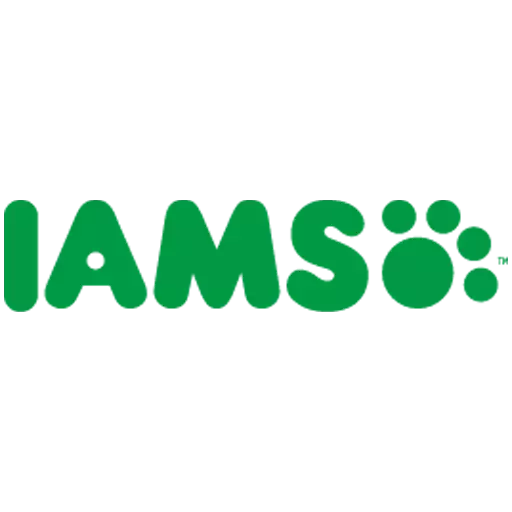
The Iams Company was founded in 1946 and is currently owned by Mars, Incorporated.
The company is well-established and one of the biggest pet food brands worldwide, but its popularity has been accompanied by numerous recalls and a history of scandal.
In 2002 and early 2003, a PETA investigator worked undercover in an Iams partner research facility. The PETA film exposed inhumane treatment of animals in filthy conditions. The exposé prompted Iams to cut ties with the Sinclair Research Center.
Iams products are manufactured in company-owned facilities located in Ohio, Nebraska, and North Carolina.
Recall History
Iams has had multiple recalls during its 50-plus years in business.
2007
Iams was a part of the nationwide Menu Foods recall due to melamine contamination.
2010
In June of 2010, Iams issued a recall of ProActive Health canned food for kittens and cats due to low thiamine (Vitamin B1) levels. In July, the brand’s Feline Renal formula was recalled due to potential salmonella contamination. Just one month later, Iams issued a third recall, again due to concerns about salmonella contamination. This time, the Indoor Weight Control with Hairball Care dry food was affected.
2011
In December of 2011, Iams puppy dry dog food was recalled due to aflatoxin mold contamination. No cat food was affected.
2013
Iams Shakeables dog treats were recalled for potential mold growth. No cat food was recalled. Later in the year, several other dog food formulas were recalled due to salmonella potential.
Top Recipe: Iams ProActive Health Sensitive Stomach Dry Adult Cat Food
First 5 Ingredients: Chicken By-Product Meal, Corn Meal, Chicken, Brewers Rice, Corn Grits
The meat ingredients are a combination of vague labeling and specificity. The food contains chicken by-product meal, chicken, animal fat, dried egg product, and natural flavor.
Both corn meal and corn grits are prominent on the ingredient list. The recipe also includes brewers rice, a rice by-product made from milled rice kernel fragments. It’s nutritionally equivalent to white rice.
This recipe is 33% crude protein, 14% fat, and 33% carbohydrates.
7. Friskies
Wet and dry cat food
The original brand started in 1958 and was sold by the Carnation Company as “Little Friskies”. Little Friskies was the first dry food made specifically for cats. The brand was acquired by Nestle in 1985.
Friskies offers both wet and dry foods.
If you only pay attention to their selection of wet food, Friskies is nutritionally superior to some other products at a similar price. The wet foods are superior to the dry ones – they offer necessary moisture and contain lower concentrations of plant ingredients.
On the other hand, Friskies dry food uses generous amounts of corn, along with other suboptimal inclusions like artificial colors.
Like most other Purina products, Friskies is manufactured in the United States from primarily North American ingredients.
Recall History
Friskies was recalled in 2011 due to potential salmonella contamination. Only Friskies Grillers Blend dry cat food was affected by the recall.
Top Recipe: Friskies Surfin’ & Turfin’ Favorites Dry Cat Food
First 5 Ingredients: Ground Yellow Corn, Corn Gluten Meal, Chicken By-Product Meal, Soybean Meal, Beef Tallow Preserved with Mixed-Tocopherols (Form of Vitamin E)
What makes it one of the worst cat foods on the market?
The food is packed with grains and other plant ingredients. The first ingredient is ground yellow corn, followed by corn gluten meal. Soybean meal is also included.
Most of the meat ingredients are vaguely named; the recipe includes chicken by-product meal, beef tallow, meat and bone meal, ocean fish meal, animal liver flavor, salmon meal, and crab meal. While most foods use natural flavor additives, this one uses artificial flavors.
It’s 30% crude protein, 11% fat, and about 42.5% carbohydrates.
8. Hill’s Pet Nutrition Science Diet
Dry and canned cat food
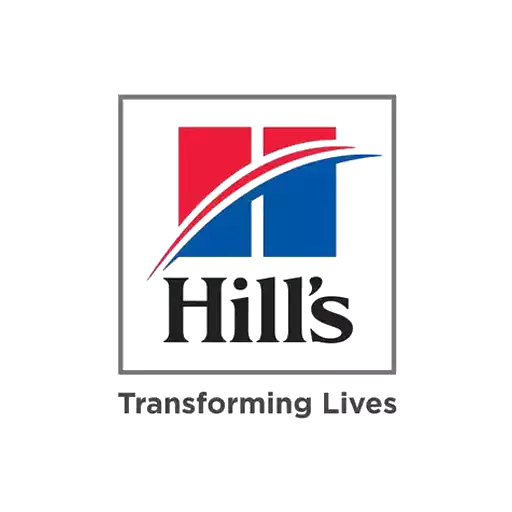
Hill’s Science Diet is an ironically well-respected brand. Its reputation for excellence and popularity among veterinarians have earned it a premium price tag, but Hill’s food is little better than the average grocery store brand. Most formulas are laden with plant ingredients and fillers.
The brand is owned by Colgate-Palmolive.
All Hill’s Science Diet foods are manufactured in company-owned facilities in the United States from ingredients sourced in North America and Europe.
Recall History
Hill’s Science Diet has been recalled several times in the recent past.
2007
In March of 2007, all Science Diet Savory Cuts canned cat foods were recalled due to concerns about melamine contamination. The recall expanded in April to include Hill’s Science Diet Prescription Diet m/d Feline dry cat food.
2014
In 2014, Hill’s Science Diet dog food was voluntarily recalled in certain U.S. states out of concern about potential salmonella contamination.
2015
In November 2015, certain Science Diet canned foods were withdrawn due to labeling issues.
Top Recipe: Hill’s Science Diet Adult Indoor Formula Dry Cat Food
First 5 Ingredients: Chicken, Whole Grain Wheat, Corn Gluten Meal, Pork Fat, Powdered Cellulose
What makes it one of the worst cat foods on the market?
This food has some positive qualities: it’s made without artificial colors, flavors, or preservatives, and the recipe starts with chicken rather than a vaguely-labeled by-product. However, a more probing look at the formula reveals serious flaws. It’s made with multiple high-protein plant ingredients, distorting our idea of the biologically available protein content.
The second ingredient is whole grain wheat, and it’s accompanied by numerous minimally nutritious plant ingredients like corn gluten meal, powdered cellulose, pea bran meal, wheat gluten, dried beet pulp, and oat fiber.
The food is 29.5% protein, 16% fat, and about 36% carbohydrates.

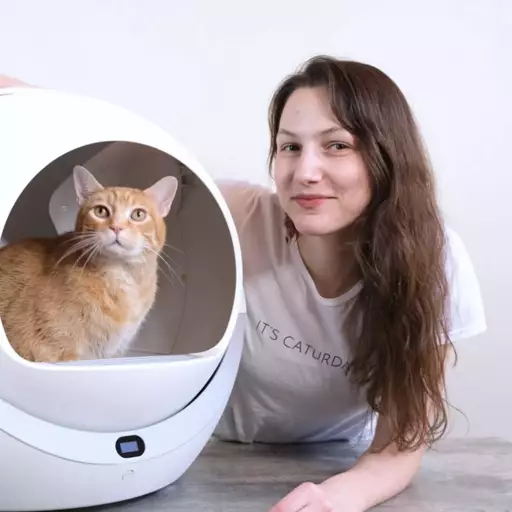





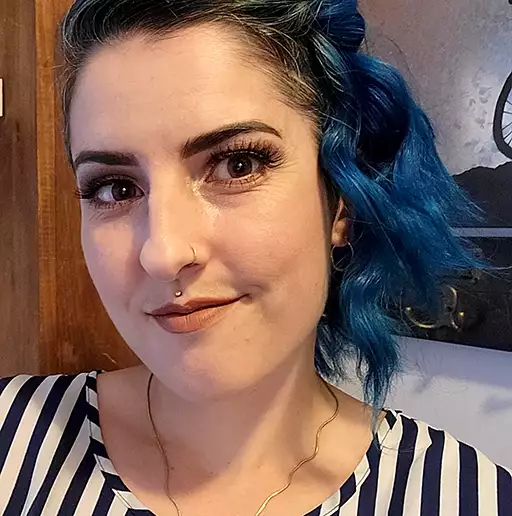


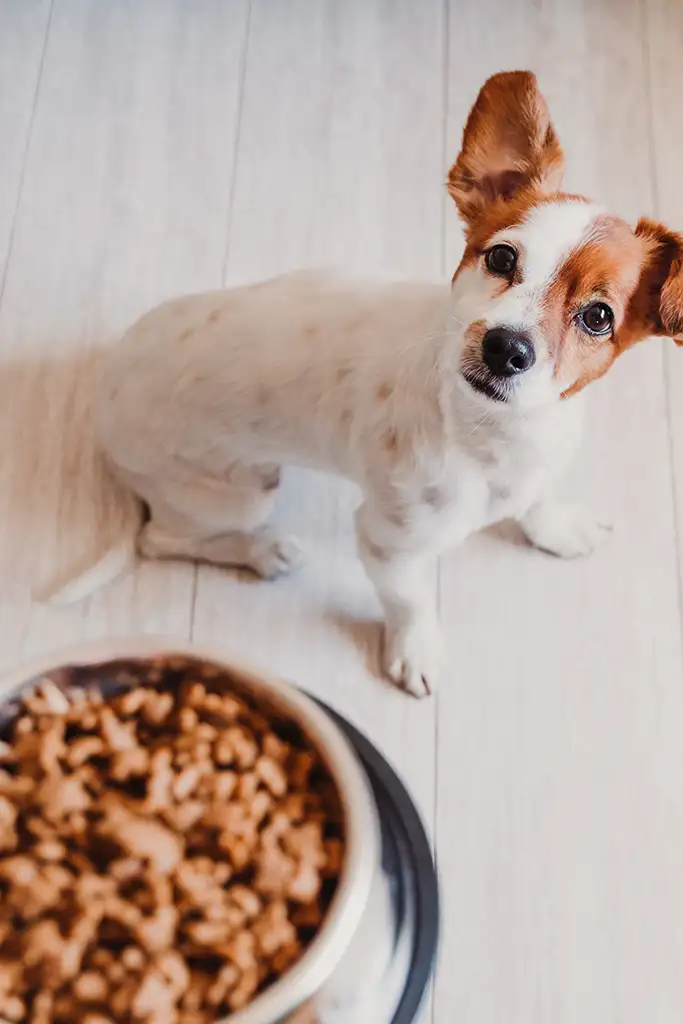
Thank you for all your hard work and such a comprehensive look. What do you think are the best brands?
I would also like to know which brands are good? Or is it the case that if they’re not the worst then they’re OK?
It’s definitely not the case that everything else is acceptable. In general, we recommend any fresh or raw frozen packaged foods. Dry food isn’t great for cats, but there are some recipes that are better than others. Wet food is better than kibble, but even that can be troublesome.
Best brand pet food is anything you cook that you would eat, such as boiled chicken or beef, rice, corn and maybe carrots. Manufactured pet “foods” are garbage including dead and diseased animals, feces; packaged unsold meats from grocery shops-including the plastic.
Cook for your pet. it’s cheaper and will keep them healthier.
Thanks a lot for these information. It’s honestly pretty difficult to trust the same veterinarian hospital that is selling you cat food, I just don’t why they’re not separated in most cases. I’m currently on the same situation where we changed Nutri Source to Purina Pro Plan Urinary. That is because one of the cats suffered a bit from kidney stones. but now the other cat seem to be having a challenge with Purina. Our doc (which works outside of a local store and is specialized in digestive care) told us that it could be that excess of fiber or carbs on Purina could be causing him nausa and vomit since there’s so much he couldn’t digest. Now I’m changing to Hill’s digestive care but now I’m so sure, It’s so frustrating…
The above listing has Hills also mentioned as a bad food source. My cat got sick from a urethan infection, I almost lost him. They put him on Royal canine. I did not like the ingredients and started to make my own cat food. I use 2 meats, 1fish and little carrot and celery. Also add fish oil. There are ideas on the internet, but really what does a cat eat in nature? Animals! They don‘t eat veggies or corn. Best of luck with your cats!
My vet wanted me to start Hills for my cat. I was leery, esp. of the price. A very sweet and innocent tech was telling me that Hill’s Science invited them to some kinda continued /learning event and she was so impressed (and no doubt the vet as well) She seemed unaware that it was a sales pitch/sale training session. I read the ingredients and couldn’t tell what made different from any other dry food. Anyway, got her to give me a sample and my cat’s utter refusal to even consider the pellets food, let me off the hook for rejecting the his doctors recommendation. But I was left feeling a little guilty for not doing the very best for cat, until I read your article. Thanks
why do we allow these companies to poison our cats the people doing this should be in prison at least exicuted at best our country is run by criminals